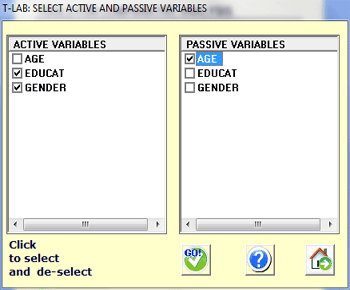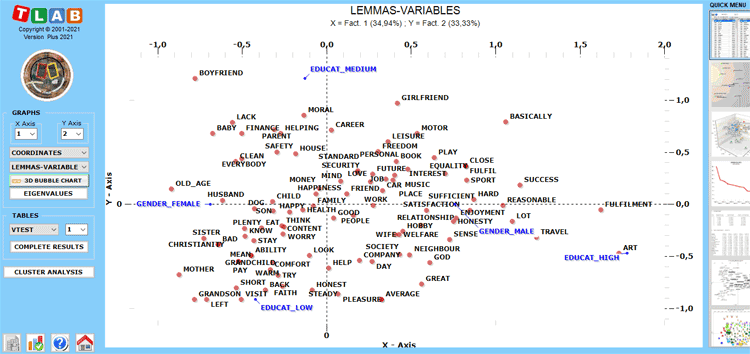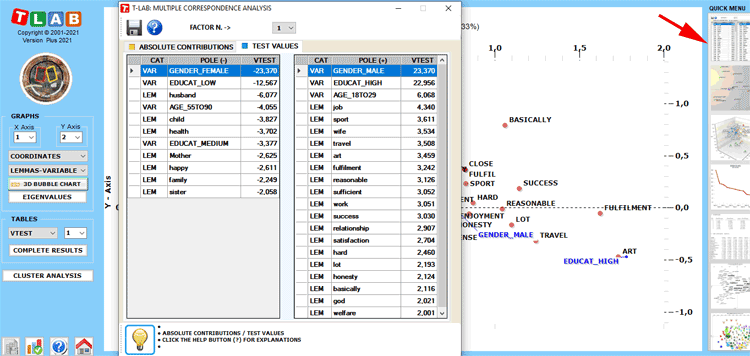|
www.tlab.it
Multiple Correspondence
Analysis
Multiple Correspondence Analysis, which may be
considered an extension of the simple Correspondence Analysis, allows us to analyse the
relationships between two or more categorical variables.
In T-LAB, the limitations of this kind of
analysis are the following:
- 150,000 elementary contexts as rows;
- 250 variable categories as columns;
- 3,000 key-words, as supplementary columns (Lebart L., Salem A.,
1994)
Multiple Correspondence Analysis, available only if the
corpus includes at least two variables, requires that the user
select his options within the following window:

At the end of the analysis:
- T-LAB outputs are the same as correspondence
analysis (see below) plus the Burt table (Burt_Table.xls) including
all crossed variables;
- only when the elementary contexts
correspond to primary documents (e.g.
responses to open-ended questions) it is possible to do a cluster analysis.


|